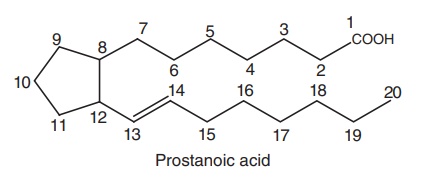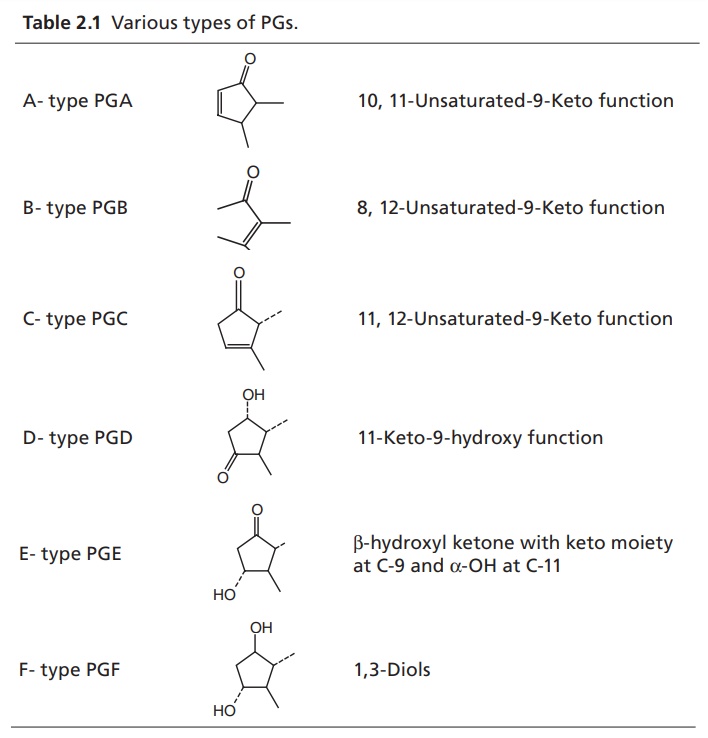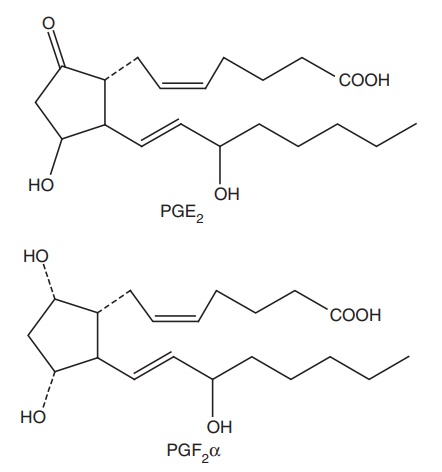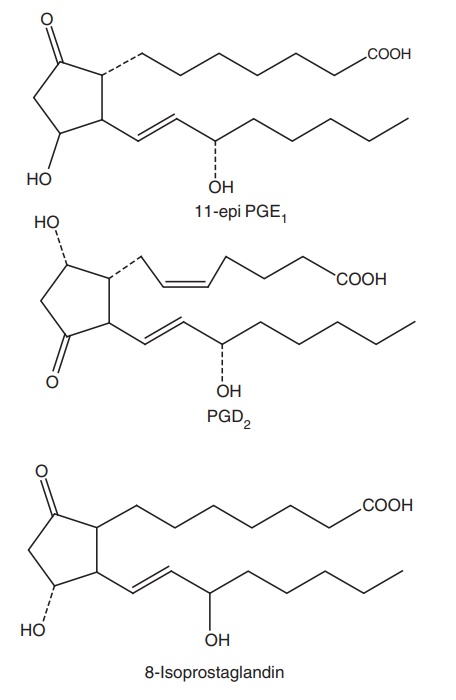Functions of PGs (Prostaglandins)
| Home | | Medicinal Chemistry |Chapter: Medicinal Chemistry : Prostaglandins
There are varieties of physiological effects including the following:
FUNCTIONS OF PGs
There are
varieties of physiological effects including the following:
1. Blood
clots are formed when a blood vessel is damaged. A type of PGs called
thromboxane (TxA2) stimulates constriction and clotting of
platelets. Conversely, PGI2 have the opposite effect on the walls of
blood vessels.
2. Certain
PGs are involved in the induction of labour and other reproductive processes.
PGE2 causes uterine contractions and has been used to induce labour.
Nomenclature

PGs are
considered as analogues of poly unsaturated fatty acids. It is a 20 carbon
carboxylic acid containing a five-member ring. The PGs (Table 2.1) are classified
according to the nature of:
A.
Cyclopentane
ring.
B.
Two side
chain.
C.
Configuration
of newly introduced functional group.
Table 2.1 Various types of PGs.

The main
classes are further subdivided according to the number of double bonds in the
side chain. This is indicated by the subscripts 1, 2, or 3 and refers to the
fatty acid precursor in most instances.
Examples:
PGE2 and PGF2α.

Two side
chains are attached to the cyclopentane ring at C-8 and C-12. The upper chain,
having a carboxylic acid group at the terminal, is α -side chain and the lower
chain, having OH group at C-15 position, is a β side
chain. The α and β chains are in trans configuration
in the prostanoic acid. The chiral centre C-15 is a δ nature (PGE). The OH
group at C-11 in the E series has the α configuration, however, in unnatural
configurations the 11-OH is called 11-epi PGs, having arms fused C to each other
and are named as iso prostaglandins.

Related Topics
